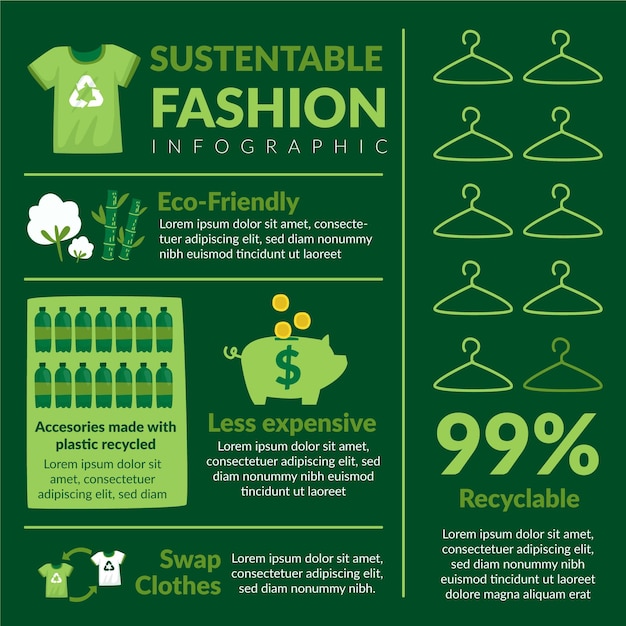Stay Ahead of the Contour by Checking Out Ingenious Style Fads
In an industry as vibrant as fashion, remaining ahead involves more than just complying with current trends-- it demands an exploration of innovation. The merging of technology and style declares a brand-new age of consumer engagement.

Embracing Smart Textiles
In the last few years, the apparel industry has actually witnessed a transformative change with the assimilation of clever fabrics, an advanced innovation that mixes innovation with material. This evolution stands for not just a combination of visual appeals and capability yet likewise a significant jump towards sustainability and personalization in fashion. Smart fabrics, additionally referred to as e-textiles, installed innovative electronic devices such as sensing units and conductive threads within the textile, allowing garments to engage with the atmosphere or the user.
These fabrics are developed to monitor physiological parameters, such as heart price or body temperature, giving real-time wellness analytics. Past wellness applications, wise textiles are also being made use of for adaptive clothes, which can change color or pattern in response to ecological stimulations, therefore providing a vibrant fashion experience.
Furthermore, the development of energy-harvesting textiles that generate power from movement or sunlight is leading the method for self-sufficient wearable innovation. This development is interesting environmentally aware consumers and designers intending to reduce the eco-friendly footprint of style. As r & d in this area advance, smart fabrics are anticipated to come to be increasingly common, improving the landscape of modern-day style with their multifunctional capacities.
The Increase of 3D Printing
Reinventing the production landscape, 3D printing has emerged as a game-changer in the fashion business. This cutting-edge technology has made it possible for designers to push the boundaries of creative thinking, producing detailed and personalized garments that were formerly inconceivable. By leveraging electronic design and additive production, 3D printing promotes the creation of complex geometries and patterns, permitting designers to try out new textures and structures.
A noteworthy benefit of 3D printing in fashion is its ability to generate on-demand, decreasing waste and lowering supply demands. This performance not only enhances production procedures but additionally enables quick prototyping, allowing designers to bring their visions to life in a shorter timeframe. Furthermore, 3D printing supports personalization to a level unparalleled by conventional techniques, providing distinct layouts and personalized fits customized to individual customer preferences.
The rise of 3D printing has actually also equalized style, making it available to emerging designers who can currently fabricate premium pieces without substantial financial investment in traditional manufacturing facilities. As innovation remains to advancement, the fashion business is positioned to harness the full potential of 3D printing, discovering brand-new materials and methods that will most certainly redefine exactly how fashion is developed and created.
Sustainable Fashion Technologies
As the fashion sector faces the pressing requirement for ecological duty, sustainable fashion innovations have actually arised at the center of transformative modification. The expanding recognition of ecological effect has actually fueled a shift in the direction of even more eco-conscious methods and materials. Brands and developers are now prioritizing sustainability, incorporating approaches that lessen waste and lower carbon footprints.
One considerable advancement is the surge of circular style, which stresses recycling and upcycling to expand the lifecycle of garments. This technique not just minimizes waste however likewise motivates consumers to embrace an see this website extra mindful strategy to apparel intake.
An additional breakthrough depends on the adoption of innovative dyeing methods read the article that utilize waterless processes or all-natural dyes, thus lowering the huge amounts of water and chemicals typically utilized in fabric dyeing. In addition, developments in biotechnology have led to the creation of lab-grown natural leather and textiles, supplying ecologically pleasant and cruelty-free alternatives to standard products. Through these introducing efforts, the fashion sector is making meaningful strides towards an extra lasting future.

Tech-Integrated Apparel
Tech-integrated garments represents an innovative fusion of fashion and technology, reshaping exactly how people connect with their clothes. This cutting-edge domain is marked by the addition of smart textiles and ingrained digital parts, improving both functionality and visual allure. From health and fitness trackers embedded in sports apparel to heated jackets regulated using mobile phone apps, tech-integrated apparel provides customers unprecedented convenience and versatility.
Introducing brand names are driving this pattern, concentrating on creating garments that react to environmental stimulations or individual commands. As an example, some garments can alter shade or pattern in response to temperature changes, while others incorporate biometric sensors to keep track of health and wellness metrics like heart price or stress levels. The smooth combination of innovation right into textiles additionally prolongs to environmental sustainability, with efforts to establish self-cleaning textiles or garments that get used to climate condition, thus lessening the demand for several layers.
Moreover, the advent of wearable modern technology is not just limited to apparel yet extends to devices like watches and eyeglasses, additional broadening the scope of tech-integrated fashion. As the sector remains to introduce, the possibility for modification and personalization in garments expands, offering customers distinct, tech-enhanced fashion experiences that accommodate their individual requirements and preferences.
Future of Virtual Style
In current years, the future of online fashion has actually arised as a transformative force within the sector, leveraging developments in electronic modern technology to redefine how style is created, experienced, and taken in. By incorporating enhanced reality (AR), virtual fact (VIRTUAL REALITY), and 3D layout tools, designers can currently craft immersive and interactive experiences that go beyond conventional fashion limits. Online style permits the production of garments that exist entirely in electronic atmospheres, offering endless opportunities for advancement without the constraints of physical production.
This digital change not just provides opportunities for creative expression but likewise addresses sustainability issues fundamental Click This Link in conventional fashion practices. Cape Town Sustainable Fashion. By removing the requirement for physical sources, digital style minimizes waste and decreases carbon impacts. Furthermore, the rise of online fashion aligns with the boosting customer demand for distinct and tailored experiences, as digital garments can be customized and customized to private preferences easily

Conclusion
The fashion business's future depend on the assimilation of lasting techniques and ingenious technologies - Cape Town Sustainable Fashion. Smart textiles and tech-integrated apparel are improving capability, while 3D printing provides opportunities for modification and waste decrease. Sustainable style, through round methods and environment-friendly products, shows a commitment to environmental stewardship. Additionally, online style is poised to redefine customer interactions. Adapting to these patterns is crucial for brands looking for to remain competitive and pertinent in this quickly evolving landscape.
In current years, the fashion sector has actually seen a transformative change with the integration of wise textiles, a sophisticated innovation that blends technology with material.As the style sector grapples with the pressing requirement for ecological responsibility, lasting style technologies have actually arised at the forefront of transformative modification.In current years, the future of online fashion has emerged as a transformative force within the sector, leveraging improvements in digital technology to redefine how style is produced, experienced, and taken in. The increase of online fashion lines up with the raising customer demand for individualized and one-of-a-kind experiences, as digital garments can be tailored and tailored to specific preferences with ease.
The fashion industry's future lies in the integration of innovative modern technologies and lasting methods.